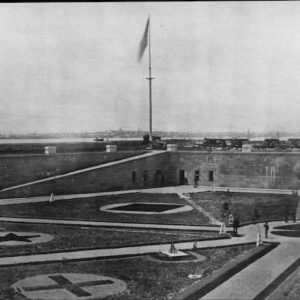Tag: Castle Island MA
Wikipedia says: Castle Island is a peninsula in South Boston on the shore of Boston Harbor. In 1928, Castle Island was connected to the mainland by a narrow strip of land and is thus no longer an island. It has been the site of a fortification since 1634.
In 1632, a fortification was constructed on Fort Hill to defend the town. In 1634, Boston sought defenses farther out in the harbor, on one of the numerous islands which protected the port. In July 1634, the town decided to build a fortification on Castle Island. Deputy Governor Roger Ludlow and Captain John Mason of Dorchester supervised construction of the fort. After a structure was built on the northeast side of the island, the General Court resolved that the fort at Castle Island should be completed before any other fortification was begun. The fort was later known as Castle William and required incoming ships to recognize the fortification and would fire at them if they didn’t offer recognition by raising their flag.
After the end of the King Philip’s War the fortress was a site of interment of captured Native Americans who were shipped out to be sold into the Atlantic slave trade markets.
By the end of the century, the fort had been expanded to create a crossfire with the fort on Governor’s Island.
Some people who worked at the fort included Thomas Beecher (ancestor of Henry Ward Beecher), a Castle officer; Captain Nicholas Simpkins, a first commander; Lt Edward Gibbons, a first commander; and Roger Clapp, who served for several decades as an officer.
In 1701, Colonel Wolfgang William Romer, the chief military engineer for North America, came to Boston to fortify the harbor. Castle William was improved with brick walls and 20 cannon positions by 1705. During the 18th century, many people were imprisoned at the Fort, including privateer Pierre Maisonnat dit Baptiste from 1702–06.
In 1775, Prince Hall and fourteen other men of African descent became freemasons on March 6, 1775 on the island. They were initiated in a British Army Lodge, No. 441 of the Irish Registry by J. E. Batt, Worshipful Master, on what was then still called Castle William Island.
During the Siege of Boston, Castle William served as the main base of military operations for the British. The leaders of the Massachusetts royal administration took refuge there with their families, as did some prominent loyalists or “tories.” Major Pelham Winslow of the prominent loyalist town of Marshfield, Massachusetts was the Commander of Castle William for a time during the Revolution. After the British Evacuation of Boston on March 17, 1776, Castle William was destroyed.[After the fort was destroyed, Lieutenant Paul Revere was put in charge of rebuilding it. The rebuilt fort was named Fort Independence on December 7, 1797.
In 1785, the fort was designated as a state prison.
Beginning in 1801, a new fort on Castle Island was built by the war department. The fort helped protect Boston from British attack during the War of 1812. The island is also the site of a monument to Donald McKay, the builder of the famous clipper ships Flying Cloud and Sovereign of the Seas. The present structure, built between 1833 and 1851, is the eighth generation of forts.
Showing the single result
